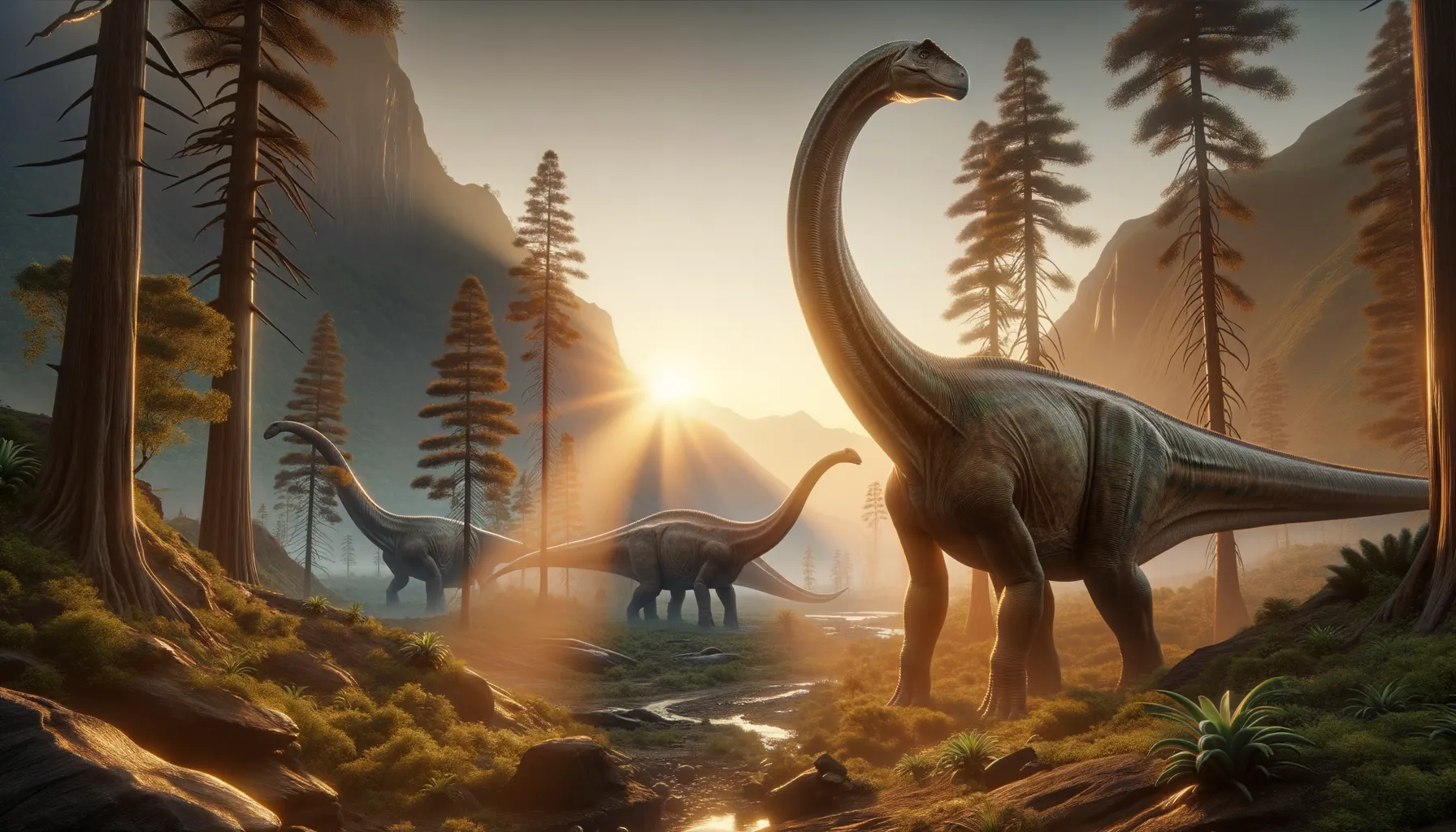
Haplocanthus
Gentle giant of the Jurassic dawn.
Period
Jurassic
Length
Up to 14 meters long.
Height
About 3.5 meters at the hips.
Weight
Approximately 12,000 to 15,000 kilograms.
Haplocanthus was a medium-sized sauropod dinosaur that roamed the Earth during the Jurassic period. It belonged to a group of long-necked dinosaurs that were herbivorous, meaning they primarily ate plants. Known for its relatively lighter build compared to other massive sauropods, Haplocanthus played a unique role in its ecosystem. Its fossils help paleontologists understand more about the diversity of ancient ecosystems.
Diet
Haplocanthus was herbivorous, grazing on a variety of plant life. Its long neck allowed it to reach vegetation at different heights, including leaves and branches from taller trees. This diverse diet helped sustain its substantial size.
Hunting
As an herbivore, Haplocanthus did not engage in hunting. It relied on its size and possibly herd behavior for protection. Predators would have found it challenging to attack a fully grown Haplocanthus.
Environmental challenges
Haplocanthus lived during a time of significant environmental changes, such as fluctuating climates and the spread of new plant species. It needed to roam vast areas to find enough food to sustain its massive body. Periodic droughts may have posed challenges, affecting the availability of water and lush plants.
Speed
Likely slow due to its large size.
Lifespan
Estimated to be several decades.
First discovery
Discovered in the late 1800s in North America.
Fun Facts
- Haplocanthus was a relatively small sauropod dinosaur, meaning it was smaller compared to other giant long-necked dinosaurs.
- It lived during the Late Jurassic period, which was about 155 to 150 million years ago.
- Haplocanthus had a long neck and tail but a shorter body compared to other sauropods.
- It was first discovered in the late 19th century in the Morrison Formation in the western United States.
- The name 'Haplocanthus' means 'simple spine' referring to its distinctive vertebrae structure.
- Despite its name suggesting simplicity, it has provided complex insights into dinosaur evolution and anatomy.
- Haplocanthus is rare and fewer remains have been found compared to other Morrison Formation dinosaurs like Allosaurus or Stegosaurus.
Growth and Development
Haplocanthus likely hatched from large eggs, growing rapidly to reach sizes that deterred predators. Juveniles may have grown together, possibly maintaining a social structure to navigate the challenges of early life. Growth patterns were influenced by the availability of food and environmental conditions.
Habitat
Haplocanthus inhabited lush, forested environments with abundant plant life. These regions offered a favorable climate and resources for their survival. Access to open grasslands and water sources would have been crucial for their daily needs.
Interaction with other species
Haplocanthus likely coexisted with other herbivorous dinosaurs, sharing feeding grounds and water resources. It faced predators like theropods, which would target younger or weaker individuals. Interaction within their own species could involve social behaviors such as traveling in groups or protecting the young.
Natural lifespan
Haplocanthus could live for several decades if it avoided predators and disease.
Reproduction
Haplocanthus, like other sauropods, likely laid eggs in nesting grounds. These grounds were probably located in secluded, safe areas to protect them from predators. Parental care is uncertain, but the young might have formed their own groups for protection and learning.
Social behaviour
Haplocanthus may have exhibited some herd behavior, traveling in groups for better protection against predators. Such social groups could have been a mix of ages, providing safety in numbers. The dynamics within these groups might have included communal feeding and migration.
Fossil locations
Fossils of Haplocanthus have been found primarily in the Morrison Formation in North America. These discoveries are concentrated in the western regions of the United States, particularly in states like Colorado and Wyoming. The fossils provide crucial insights into the ecosystem of the late Jurassic period.
